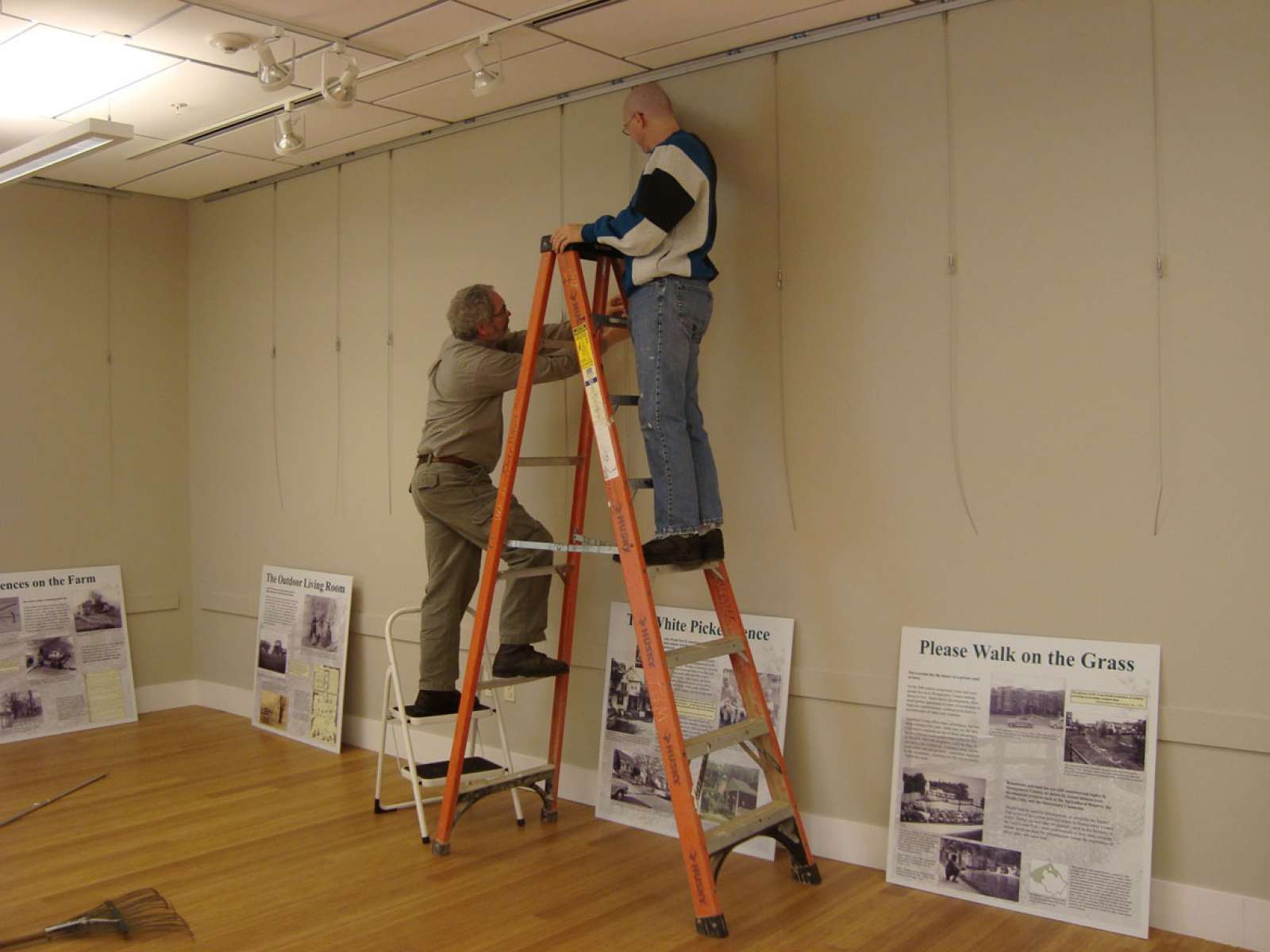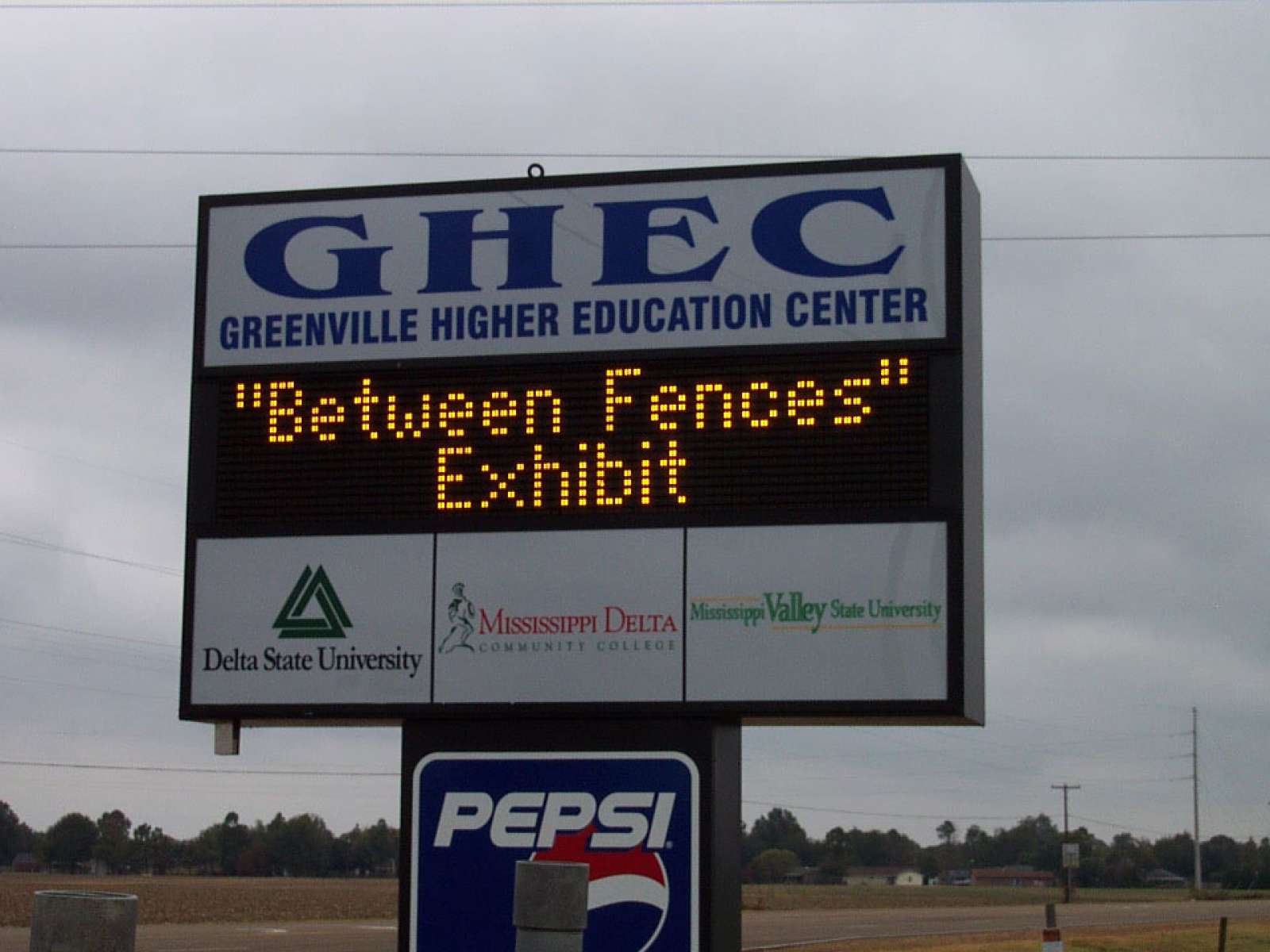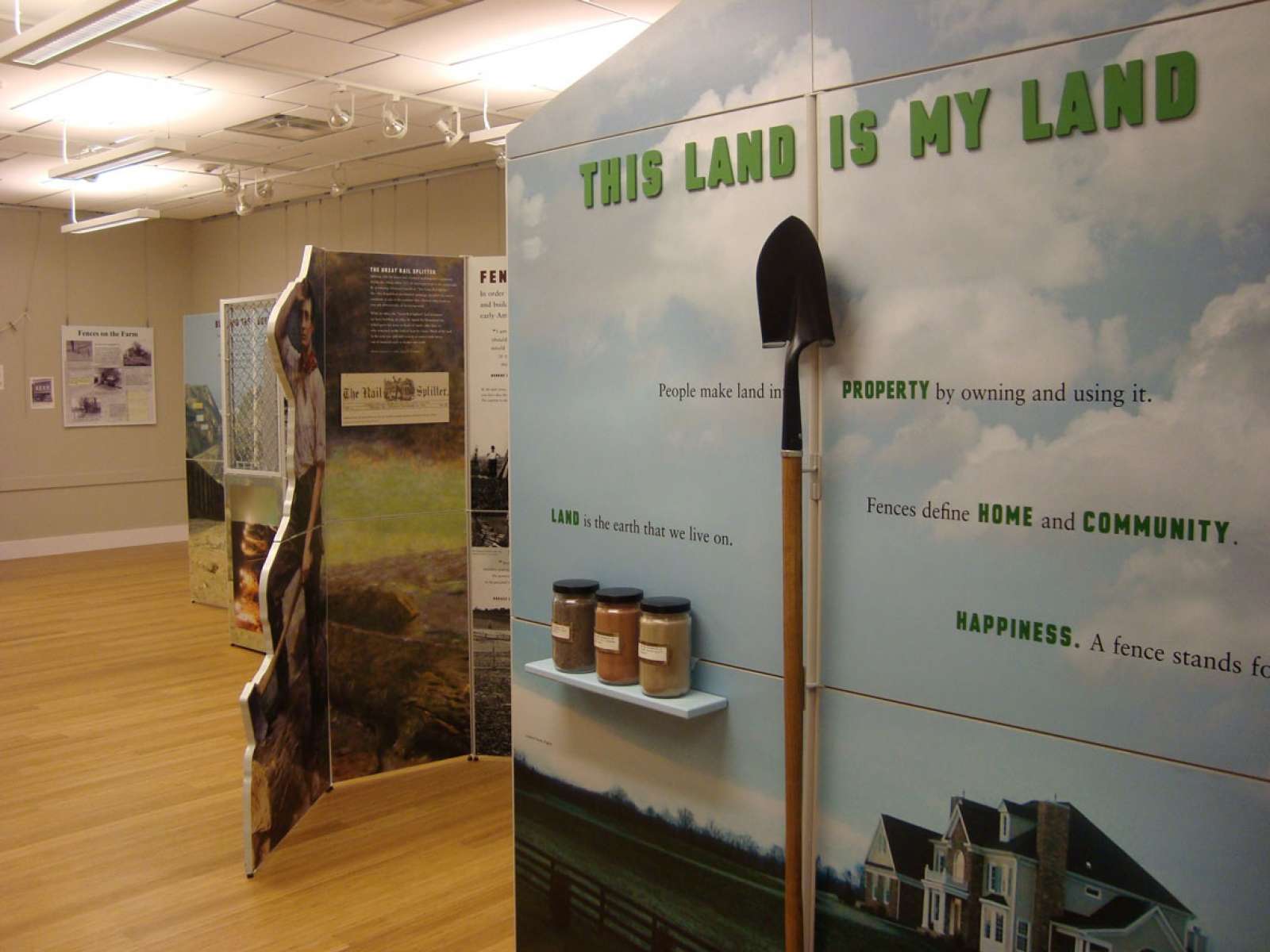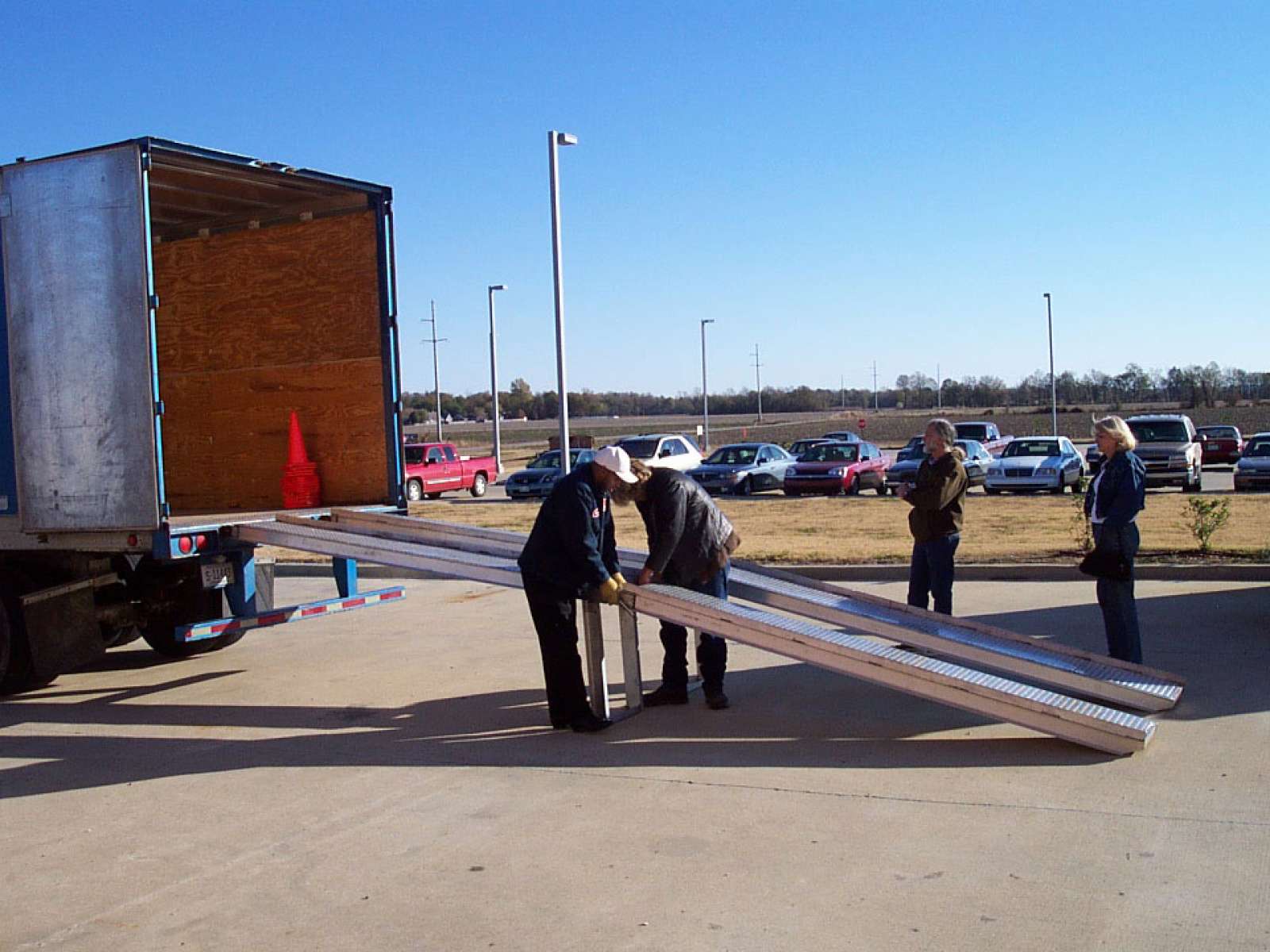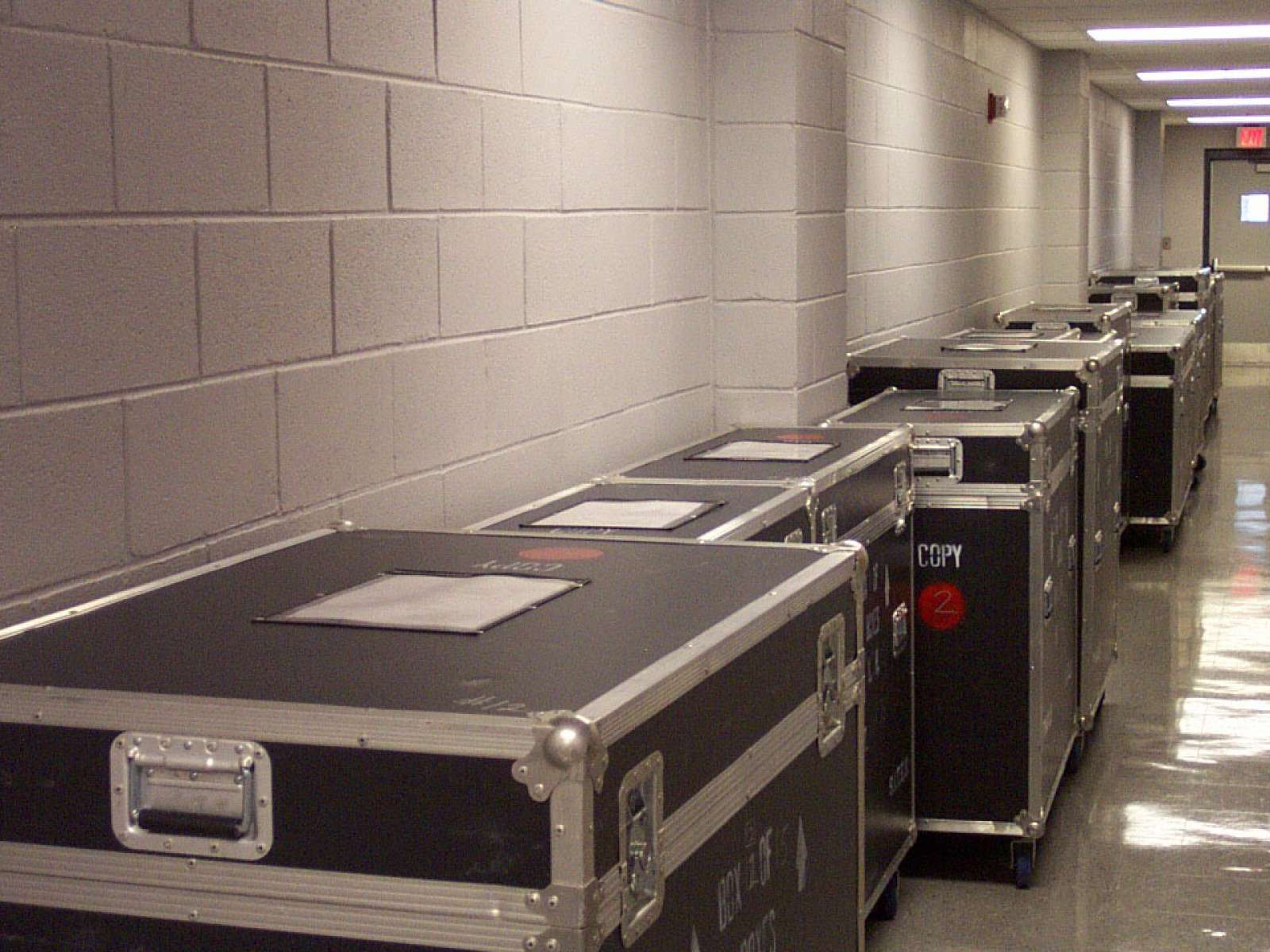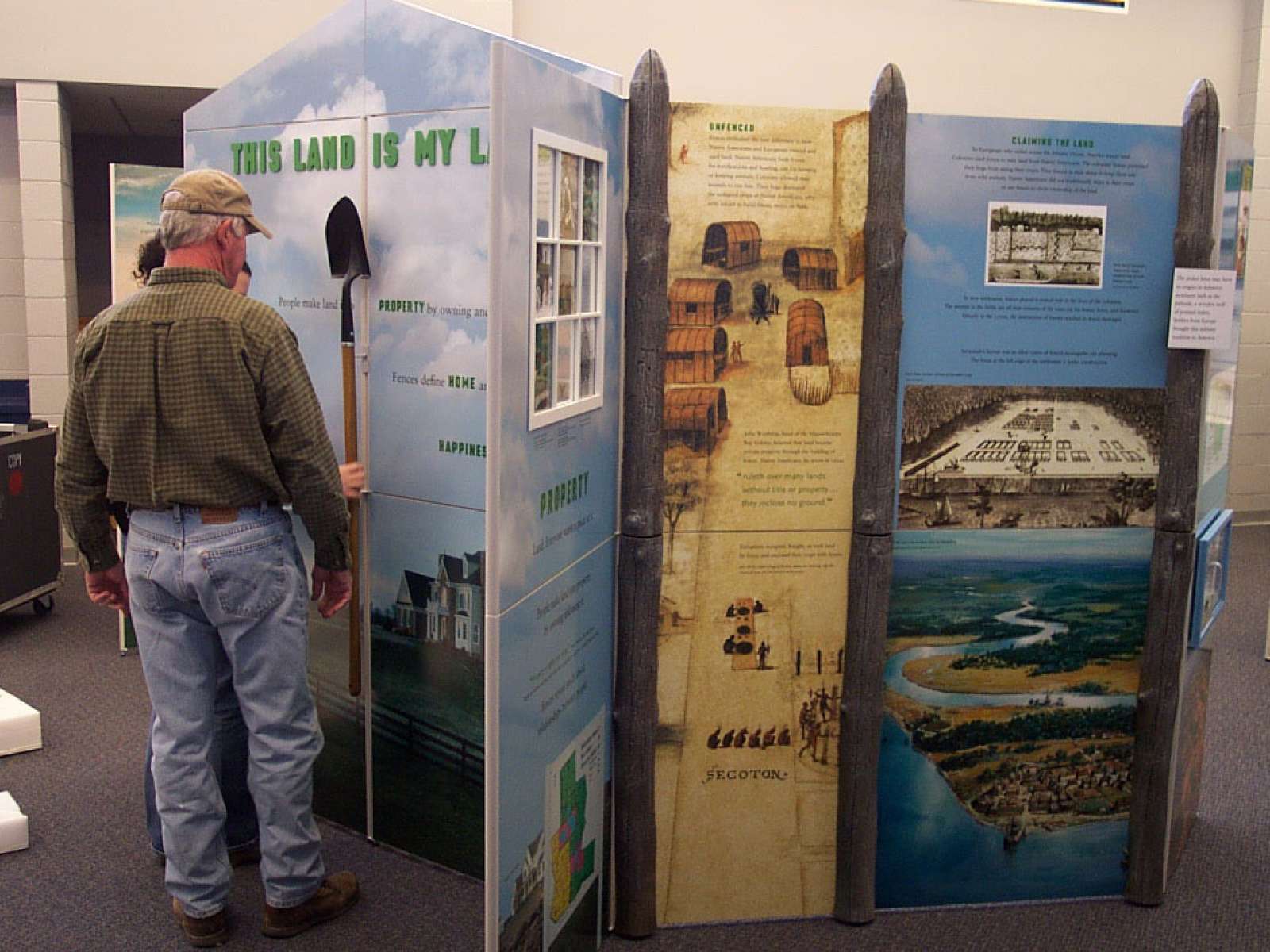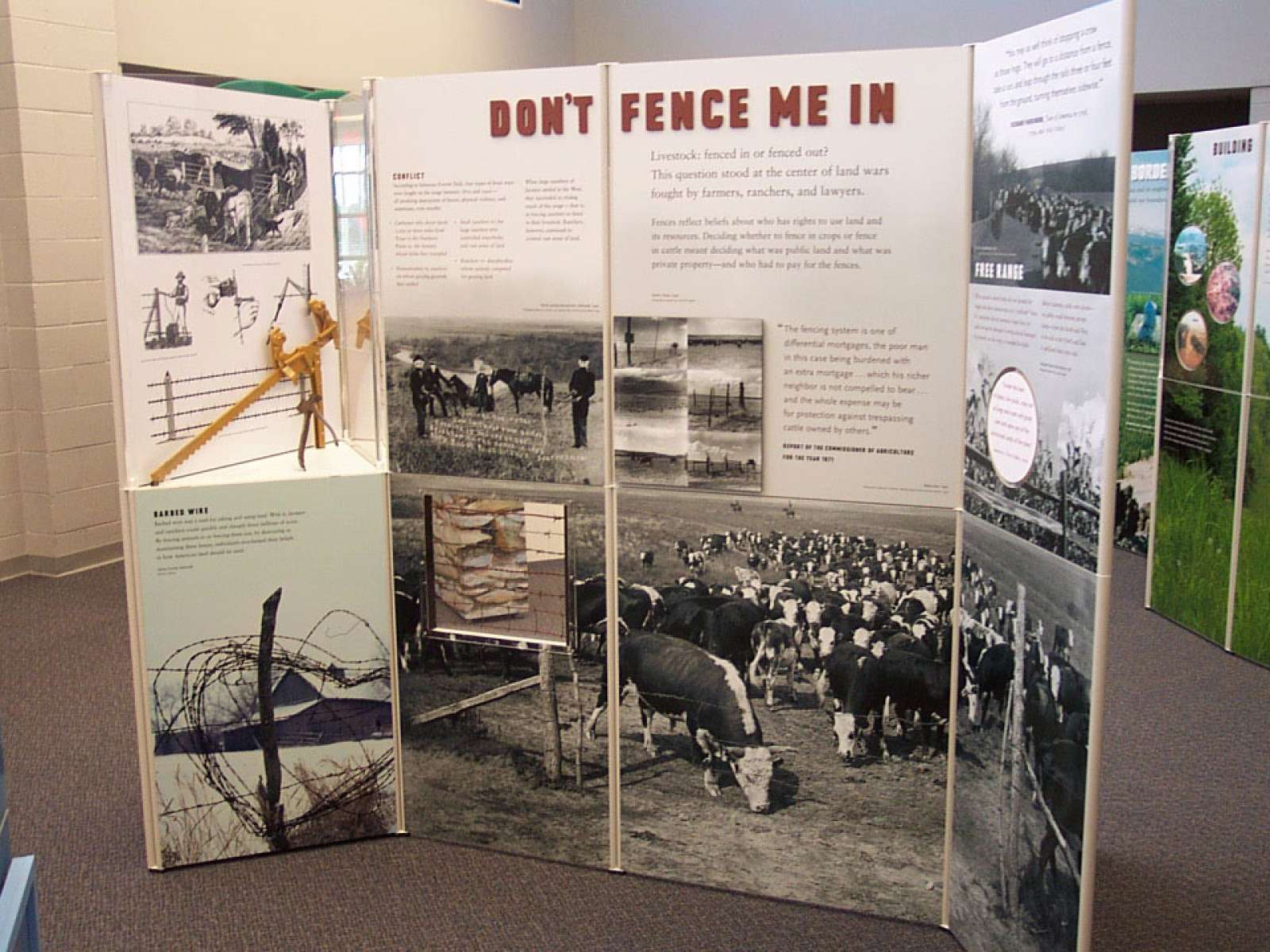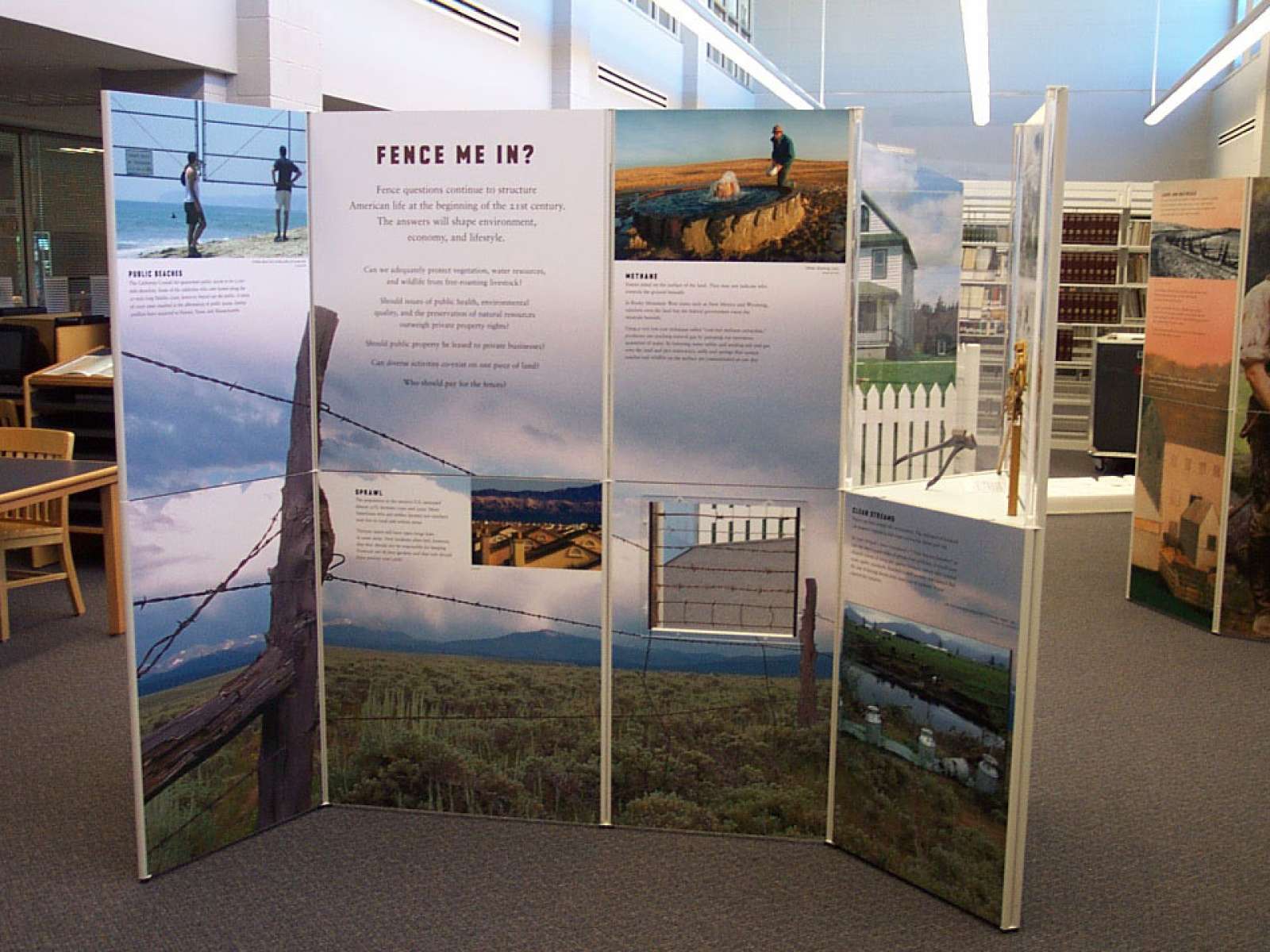Between Fences: About This Exhibition
We hardly notice them, but fences are dominant features in our lives and in our history. There are thousands of types and they span millions of miles of the American countryside. Countless rivals seized post, rail, panel, and wire to stake their claims to land and resources. In 1871, the Department of Agriculture estimated the total value of fences in the United States at $1.7 billion, a sum almost equal to the national debt. Our past is defined by the cutting point of barbed steel and the rhythm of a white picket.
Built of hedge, concrete, wood and metal, the fence skirts our properties and is central to the American landscape. Between Fences enlightened audiences who live surrounded by these familiar objects whose history and meaning they hardly suspect. Visitors discovered how tightly the fence is entwined with politics, industry, and daily life. And, they were asked to think beyond physical fences and consider the metaphorical and cultural fences that Americans face – from racial and cultural differences to neighborhood and familial relationships. Our lives are full of boundaries – seen and unseen. The ability to expose the unexpected within the familiar – while revealing to visitors something about themselves – was one of Between Fences’ great strengths.
Read MoreThis exhibition is no longer touring.
This exhibition covers many themes, including:
Early Americans believed that land ownership was a natural right of white men, 75% of whom owned land in 1763. Owning and farming land represented economic independence — the ability of a man to provide for himself and his family. It also meant political independence — a landless man was not permitted to vote or hold public office.
Many of the inventors who worked on wire fences were born on farms and lived near the edge of the frontier in states such as Illinois and Michigan. Businessman Isaac L. Ellwood and inventor Jacob Haish made DeKalb, Illinois, the center of the barbed-wire industry. Ellwood's residence, now a museum (top right corner of poster at left), stands as a monument to their success.
The fence industry typified the turn-of-the-century transformation of small trade into big business. Fence manufacturers became part of corporations that owned their own mines, raw-material production plants, and transportation facilities. Smaller barbed- and woven-wire fence and wire nail companies merged to create The American Steel and Wire Company. By 1899, the company had a monopoly on barbed wire.
Plaintiff Kaplan built several fences along the boundary between his property and the property of the defendant Pieczentkowski. Plaintiff kept cattle and horses on his property. He asked the defendant to pay part of the cost of the fence he had constructed but defendant refused. The county commissioners, acting as fence viewers, looked at the fence and concluded that the defendant should not be required to pay any of the cost of the fence.
Americans define themselves, their neighborhoods, and their country...beginning with their yards. Love thy neighbor? You may think that your property line runs from the center of the planet to the clouds, but the person next door may disagree. Fences can cause or resolve disputes with the people next door.
Looking For Exhibition Resources?
Visit our Resource Center for Exhibition Guides, Lesson Plans, Scavenger Hunts, Reading List, Docent Handbooks, Free Posters, and more!



